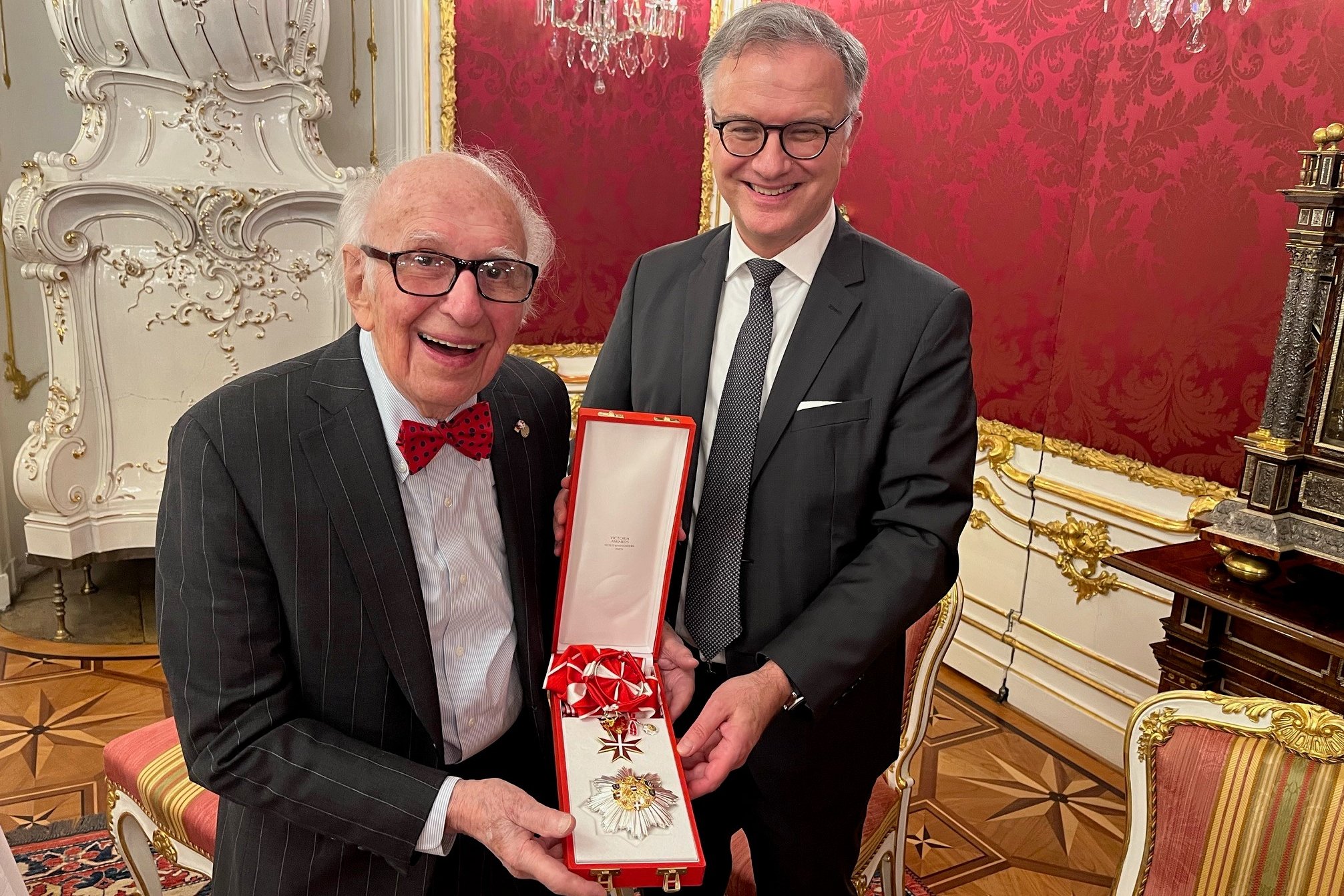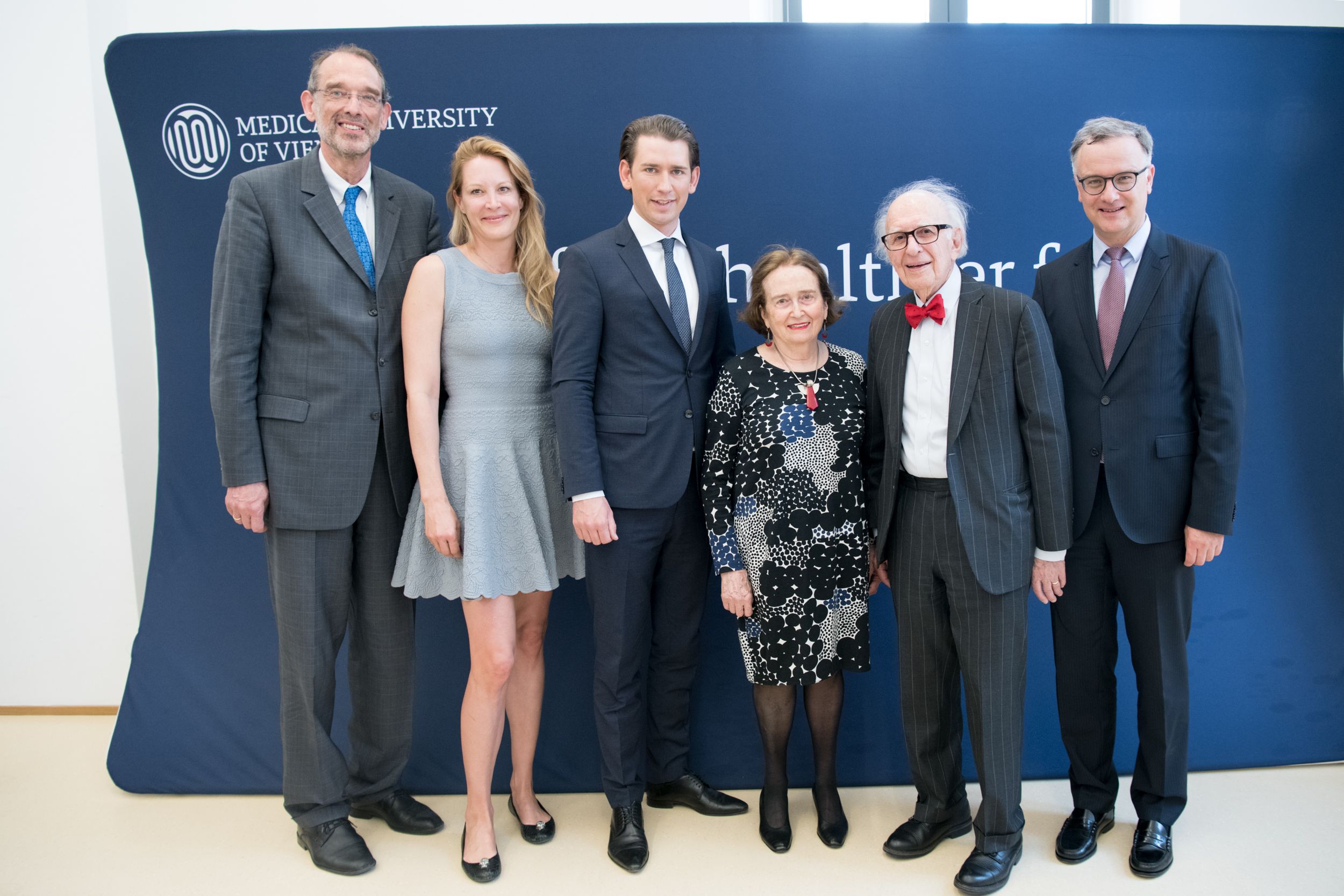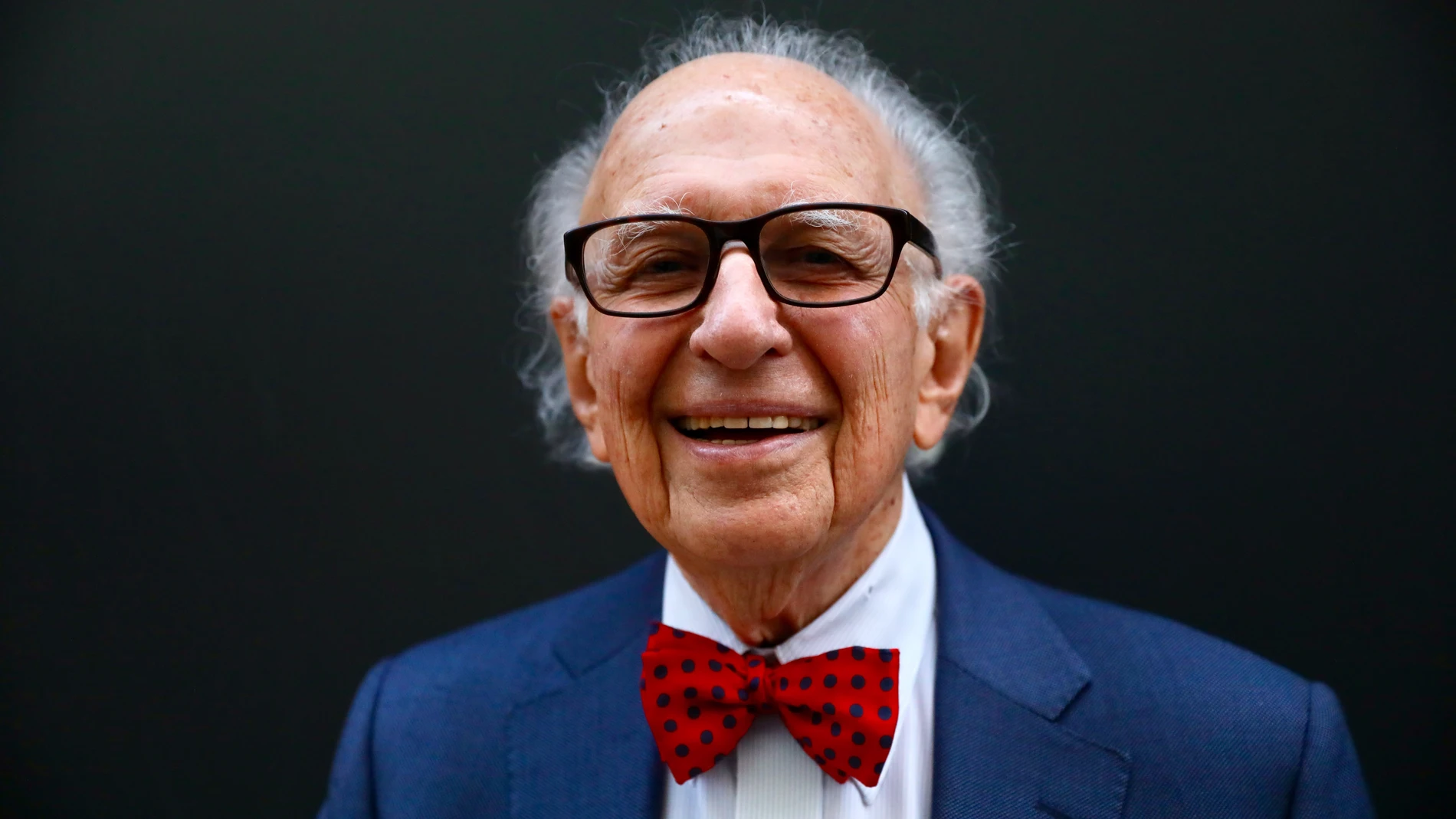Eric Kandel
Eric Kandel

Eric Richard Kandel, born on November 7, 1929, in Vienna, Austria, is a prominent figure in the field of neuroscience. After relocating to the United States, he became a naturalized American citizen. Kandel's career spans various disciplines, including psychiatry, neurobiology, and biochemistry.He is renowned for his groundbreaking research on the physiological mechanisms underlying memory storage in neurons, which earned him the Nobel Prize in Physiology or Medicine in 2000. Kandel shared this prestigious award with fellow scientists Arvid Carlsson and Paul Greengard.
Currently, Kandel holds the position of Professor of Biochemistry and Biophysics at the College of Physicians and Surgeons at Columbia University. He is also a Senior Investigator at the Howard Hughes Medical Institute. Additionally, Kandel played a pivotal role as the founding director of the Center for Neurobiology and Behavior, which later evolved into the Department of Neuroscience at Columbia University.
Outside of academia, Kandel is actively involved in various scientific organizations and initiatives. He serves on the Scientific Council of the Brain & Behavior Research Foundation, contributing his expertise to advance research in the field of neuroscience.
Kandel's significant contributions to science are not limited to his research endeavors. He has also written extensively, offering insights into his life and scientific discoveries. His memoir, In Search of Memory: The Emergence of a New Science of Mind, received widespread acclaim and won the 2006 Los Angeles Times Book Prize for Science and Technology. Through his writing, Kandel has made complex scientific concepts accessible to a broader audience, furthering public understanding of neuroscience.
Eric Kandel's upbringing and early life experiences greatly influenced his academic and professional journey in neuroscience. Born to Charlotte Zimels and Hermann Kandel, both of whom were of Ashkenazi Jewish descent, Eric spent his formative years in Vienna, Austria. However, the rise of Nazi Germany and the annexation of Austria led to the Kandel family's decision to flee the country due to escalating persecution of Jews.
In 1939, when Eric was nine years old, he and his brother Ludwig immigrated to the United States, joining their uncle in Brooklyn. Their parents followed later, seeking refuge from the oppressive regime in Europe. Despite the challenges of starting anew in a foreign land, Eric adapted to his new surroundings and pursued his education in Brooklyn. He received a strong foundation in Judaic studies and attended the Yeshiva of Flatbush before graduating from Erasmus Hall High School.
At Harvard University, Kandel embarked on his academic journey, majoring in History and Literature. It was during his undergraduate years that he delved into the study of psychology, particularly intrigued by the workings of memory and learning. While at Harvard, Kandel conducted research on the attitudes of German writers towards National Socialism, demonstrating his early interest in the intersection of psychology and history.
Kandel's fascination with the biological underpinnings of behavior and memory deepened when he encountered Anna Kris, whose parents were prominent psychoanalysts. Influenced by the work of Sigmund Freud, Kandel began to explore the connections between psychology and neuroscience, seeking to unravel the mysteries of motivation and memory at the neural level.
Ultimately, Kandel's diverse background and experiences shaped his pioneering research in neuroscience, leading to groundbreaking discoveries in the physiological basis of memory storage. His journey from Vienna to Brooklyn underscores the resilience and adaptability that fueled his remarkable contributions to the field of neuroscience.
Eric Kandel's groundbreaking research in neuroscience began to take shape during his medical education at New York University Medical School. It was during this time that he developed a keen interest in the biological mechanisms underlying the mind. His exposure to research in Harry Grundfest's laboratory at Columbia University introduced him to the field of neurophysiology and the technical challenges of studying the electrical activity of neurons in the brain.
Inspired by the work of Stephen Kuffler, who studied neurons isolated from marine invertebrates, Kandel recognized the potential of using simpler model systems to elucidate the cellular and molecular basis of learning and memory. He learned the techniques of intracellular recordings from Stanley Crain and began to investigate the electrical properties of neurons, particularly those in the hippocampus, a brain region implicated in memory formation.
Kandel's research took a significant turn when he joined the Laboratory of Neurophysiology at the US National Institutes of Health. Working with Alden Spencer, he conducted pioneering electrophysiological recordings from hippocampal neurons, providing crucial insights into their activity patterns. However, despite these advancements, Kandel realized that the complex circuitry of the hippocampus might not be the ideal system for studying synaptic plasticity underlying memory storage.
Recognizing the value of studying simpler organisms, Kandel turned his attention to the marine mollusk Aplysia californica. This decision was motivated by the organism's relatively simple nervous system, which offered opportunities for detailed electrophysiological analysis of synaptic changes associated with learning and memory. Kandel's work with Aplysia led to groundbreaking discoveries, including the identification of synaptic mechanisms underlying forms of learning such as habituation and sensitization.
In 1965, Kandel published his initial findings, demonstrating that synaptic changes in response to conditioning stimuli could be observed at the cellular level. These discoveries laid the foundation for his subsequent research on the molecular mechanisms of memory storage, ultimately earning him the Nobel Prize in Physiology or Medicine in 2000. Through his innovative approach and pioneering studies, Kandel revolutionized our understanding of the biological basis of learning and memory.
Eric Kandel's research with Aplysia at New York University Medical School marked a significant milestone in the study of learning and memory. Together with colleagues such as Irving Kupferman, Harold Pinsker, and Tom Carew, Kandel established the Division of Neurobiology and Behavior and developed experimental protocols to investigate simple forms of learning in the marine mollusk.
One of the key findings of Kandel's research was the demonstration that the gill-withdrawal reflex in Aplysia could be modified by both habituation and sensitization. This reflex, which serves to protect the slug's gill tissue from harm, provided a model system for studying the neural mechanisms underlying basic forms of learning and memory.
Over time, Kandel's research group expanded its focus to include long-term memory processes, with contributions from researchers like Tom Carew, Terry Walters, Tom Abrams, and Robert Hawkins. By studying classical conditioning in Aplysia, they were able to bridge the gap between simple forms of learning observed in invertebrates and more complex types of learning seen in vertebrates.
In addition to behavioral studies, Kandel's lab conducted detailed anatomical and physiological investigations of the neuronal circuits involved in learned behaviors. This approach allowed them to identify specific synaptic connections that were modified by learning, providing crucial insights into the mechanistic basis of memory storage.
The groundbreaking research conducted by Kandel and his colleagues with Aplysia laid the foundation for our understanding of the biological mechanisms underlying learning and memory. Kandel's seminal contributions in this field ultimately led to his recognition with the Nobel Prize in Physiology or Medicine in 2000, cementing his legacy as a pioneering neuroscientist.
References
- "Eric R. Kandel - A Superstar of Science". superstarsofscience.com. Archived from the original on 10 August 2014. Retrieved 4 May 2018.
- a b "Eric R. Kandel Curriculum Vitae". nobelprize.org. Retrieved 10 October 2018.
- ^ Kandel, Eric R. (2006). In Search of Memory: The Emergence of a New Science of Mind. W. W. Norton & Company. ISBN 978-0393329377.
- ^ Eric R. Kandel: The Nobel Prize in Physiology or Medicine 2000, Nobel Foundation. Retrieved December 27, 2019. "My grandfather and I liked each other a great deal, and he readily convinced me that he should tutor me in Hebrew during the summer of 1939 so that I might be eligible for a scholarship at the Yeshiva of Flatbush, an excellent Hebrew parochial school that offered both secular and religious studies at a very high level. With his tutelage I entered the Yeshiva in the fall of 1939. By the time I graduated in 1944 I spoke Hebrew almost as well as English, had read through the five books of Moses; the books of Kings, the Prophets and the Judges in Hebrew; and also learned a smattering of the Talmud ... In 1944, when I graduated from the Yeshiva of Flatbush elementary school, it did not have a high school yet. So I went instead to Erasmus Hall High School, a local public high school in Brooklyn that was then academically very strong."
- a b Edythe McNamee and Jacque Wilson (14 May 2013). "A Nobel Prize with help from sea slugs". CNN. Retrieved 2020-11-16.
- ^ Kandel, Eric R. "The molecular biology of memory: cAMP, PKA, CRE, CREB-1, CREB-2, and CPEB". Molecular Brain. 5: 14. doi:10.1186/1756-6606-5-14. ISSN 1756-6606. PMC 3514210. PMID 22583753.
- ^ Antonov, Igor; Antonova, Irina; Kandel, Eric R.; Hawkins, Robert D. (2003). "Activity-Dependent Presynaptic Facilitation and Hebbian LTP Are Both Required and Interact during Classical Conditioning in Aplysia". Neuron. 37 (1): 135–147. doi:10.1016/S0896-6273(02)01129-7. ISSN 0896-6273. PMID 12526779. S2CID 7839933.
- ^ Huang, Yan-You; Zakharenko, Stanislav S.; Schoch, Susanne; Kaeser, Pascal S.; Janz, Roger; Südhof, Thomas C.; Siegelbaum, Steven A.; Kandel, Eric R. (2005). "Genetic evidence for a protein-kinase-A-mediated presynaptic component in NMDA-receptor-dependent forms of long-term synaptic potentiation". PNAS. 102 (26): 9365–9370. Bibcode:2005PNAS..102.9365H. doi:10.1073/pnas.0503777102. PMC 1166627. PMID 15967982.
































![[LIVE] Engage2Earn: Save our PBS from Trump](https://cdn.bulbapp.io/frontend/images/c23a1a05-c831-4c66-a1d1-96b700ef0450/1)






















